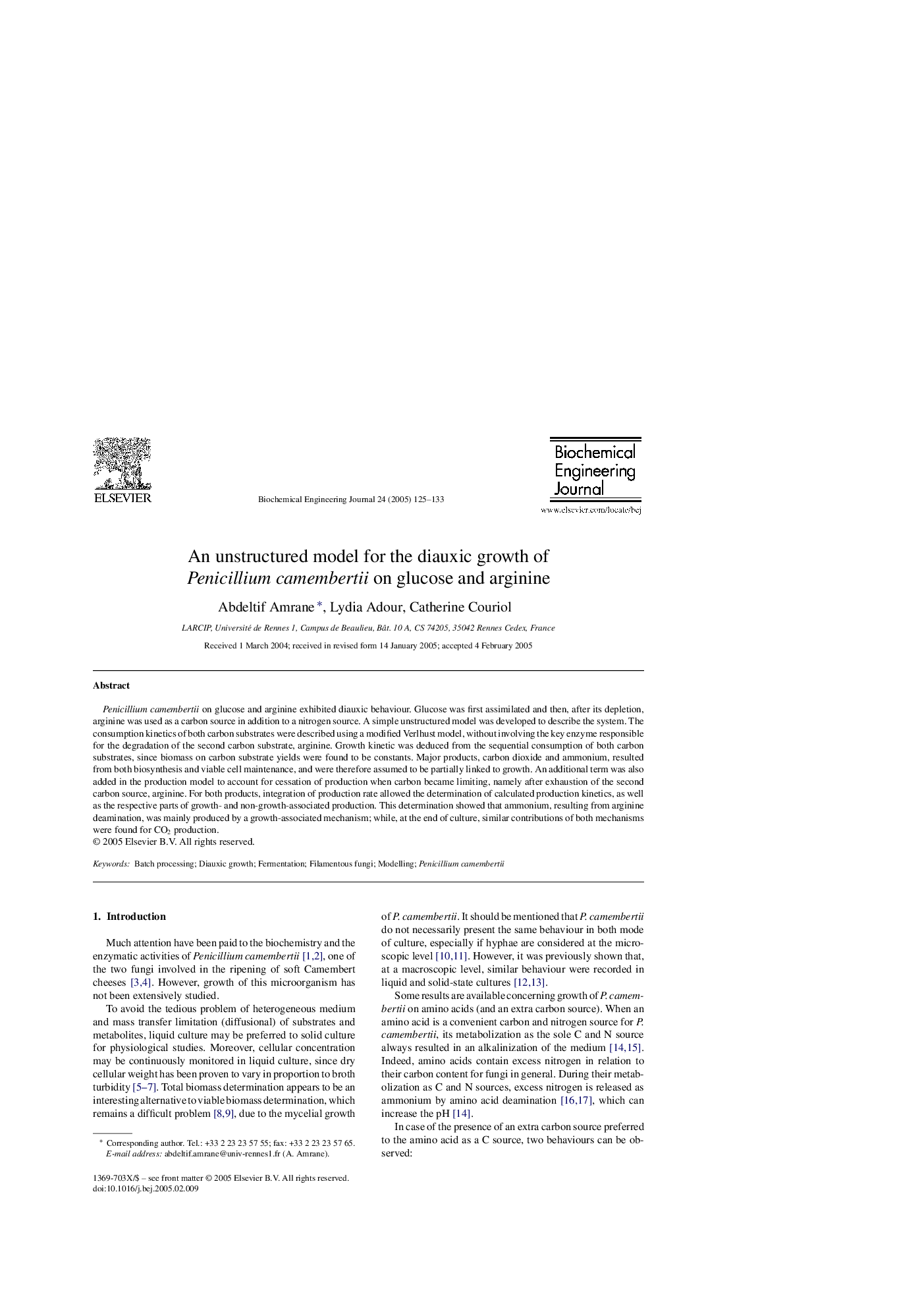| Article ID | Journal | Published Year | Pages | File Type |
|---|---|---|---|---|
| 10160657 | Biochemical Engineering Journal | 2005 | 9 Pages |
Abstract
Penicillium camembertii on glucose and arginine exhibited diauxic behaviour. Glucose was first assimilated and then, after its depletion, arginine was used as a carbon source in addition to a nitrogen source. A simple unstructured model was developed to describe the system. The consumption kinetics of both carbon substrates were described using a modified Verlhust model, without involving the key enzyme responsible for the degradation of the second carbon substrate, arginine. Growth kinetic was deduced from the sequential consumption of both carbon substrates, since biomass on carbon substrate yields were found to be constants. Major products, carbon dioxide and ammonium, resulted from both biosynthesis and viable cell maintenance, and were therefore assumed to be partially linked to growth. An additional term was also added in the production model to account for cessation of production when carbon became limiting, namely after exhaustion of the second carbon source, arginine. For both products, integration of production rate allowed the determination of calculated production kinetics, as well as the respective parts of growth- and non-growth-associated production. This determination showed that ammonium, resulting from arginine deamination, was mainly produced by a growth-associated mechanism; while, at the end of culture, similar contributions of both mechanisms were found for CO2 production.
Keywords
Related Topics
Physical Sciences and Engineering
Chemical Engineering
Bioengineering
Authors
Abdeltif Amrane, Lydia Adour, Catherine Couriol,
